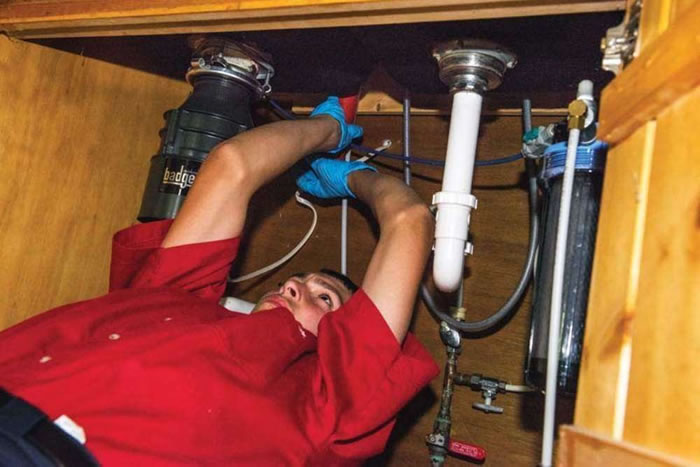Speedy Methods for Low Water Pressure in Your Home
Speedy Methods for Low Water Pressure in Your Home
Blog Article
How do you feel about Low Water Pressure in the House??

Low water pressure in your home can be a frustrating trouble, affecting everything from bathing to washing meals. If you're experiencing weak water flow, there are numerous possible reasons and services to discover. In this guide, we'll review common reasons for low tide pressure and sensible steps to resolve the issue efficiently.
Introduction to Low Tide Stress
Low tide pressure happens when the circulation of water from your faucets, showers, and various other fixtures is weaker than typical. This can make everyday tasks a lot more difficult and less effective. Understanding the causes of low water stress is critical to finding the ideal option.
Usual Causes of Low Tide Stress
Faulty Pressure Regulators
Stress regulators are accountable for maintaining constant water pressure in your home. If they malfunction, it can result in low tide stress or uneven circulation throughout your house.
Metropolitan Supply Of Water Issues
In some cases, the issue lies outside your home. Local water supply concerns, such as main line leakages or maintenance job, can briefly minimize water pressure in your area.
Pipe Obstructions
Over time, pipelines can become blocked with natural resource, sediment, or particles, limiting the flow of water. This is a typical issue in older homes with galvanized steel pipelines.
Rust
Rust within pipes can bring about leakages and minimized water pressure. Corrosion build-up can tighten water circulation, specifically in aging plumbing systems.
Just How to Identify Low Water Stress
Evaluating Pipes
Evaluate noticeable pipelines for indications of leaks, rust, or obstructions. Focus on any unusual noises, such as knocking or rattling pipelines, which can suggest issues within the plumbing system.
Consulting with a Plumber
If you're not able to identify the cause of low tide pressure, think about working with a specialist plumber to perform a thorough assessment. They can recognize underlying concerns and recommend proper options.
Checking Taps and Components
Begin by evaluating the water pressure at various faucets and components throughout your home. If the issue is separated to specific locations, it might suggest localized problems.
Do It Yourself Solutions to Take Care Of Low Water Stress
Flushing Hot Water Heater
Debris build-up in the hot water heater can restrict flow and reduce effectiveness. Purging the tank regularly helps remove debris and keep optimal efficiency.
Inspecting Stress Regulatory Authority
Ensure that the pressure regulatory authority is functioning appropriately. Changing or replacing the regulatory authority can assist recover correct water stress throughout your home.
Cleaning Up Aerators and Showerheads
Mineral deposits can accumulate in aerators and showerheads, lowering water flow. Get rid of and clean up these elements consistently to boost water pressure.
Clearing Clogs in Water Lines
For minor clogs, try using a plumbing snake or chemical drain cleaner to clear blockages in pipes. Beware when making use of chemicals and follow safety and security guidelines.
When to Call an Expert Plumber
If DIY efforts fail to solve the issue or if you believe considerable plumbing problems, it's ideal to look for help from a certified plumber. They have the knowledge and devices to deal with complicated problems safely and properly.
Safety Nets to Maintain Water Stress
Mounting a Stress Booster
Take into consideration setting up a pressure booster pump to enhance water pressure in locations with regularly reduced flow. This can be particularly useful for multi-story homes or residential properties with high-demand components.
Tracking Water Use
Bear in mind water usage habits and prevent ill-using the plumbing system. Basic changes, such as astonishing showers and laundry tons, can aid preserve appropriate water stress.
Regular Maintenance
Schedule regular upkeep for your plumbing system to stop concerns such as deterioration, leaks, and blockages. Attending to small troubles early can assist prevent more considerable repairs later on.
Final thought
Managing low water pressure can be discouraging, but identifying the underlying reasons and executing proper solutions can restore optimal circulation throughout your home. Whether it's cleaning aerators, examining pipelines, or seeking advice from a plumber, taking proactive actions can ensure a consistent supply of water for your day-to-day requirements.
FOUR WAYS TO FIX LOW WATER PRESSURE NOW
Turning on a shower or faucet only to find the water comes out in a sad, slow drizzle is never a good feeling. How exactly are you supposed to wash a pan or take a quick shower when it takes 10 minutes just to rinse off a little soap? The good news is that when your water pressure is bad, there's always a cause: typically one that can be easily fixed. Here are some of the most common causes of low pressure and what you can do to fix the issue:
DEBRIS AND MINERAL DEPOSIT BUILDUPS
If you notice low water pressure from just one or two of the fixtures in your house, the problem likely has to do with debris buildup. Water is full of minerals and other debris, all of which can accumulate in your pipes and on your fixtures. This can cause a blockage that affects how much water flows through. To fix this, try filling a small plastic bag with white vinegar, and use a rubber band to hang it around your showerhead or faucet. Let the head of the fixture soak for a few hours, and the vinegar should loosen the deposits.
WATER LEAKS
Leaks are another common cause of low water pressure. If water is flowing out of your plumbing through a hole or crack before it can reach your fixture, the pressure coming out of the faucet or showerhead will be lower. A plumbing professional is your best bet for finding and repairing a leak in your water supply pipes.
Leaks are another common cause of low water pressure. If water is flowing out of your plumbing through a hole or crack before it can reach your fixture, the pressure coming out of the faucet or showerhead will be lower. A plumbing professional is your best bet for finding and repairing a leak in your water supply pipes.
A VALVE ISSUE
If you have low water pressure throughout your home, check your main shut-off valve to make sure it's completely open. You may also want to see if there's a pressure-reducing valve installed. If there is, have a plumber help you adjust the settings to get the pressure you're looking for.
OTHERS USING WATER
Believe it or not, your low water pressure could be caused by your neighbors. If you notice low pressure at certain times of day, it may be because you and the people living next to you have similar schedules - when everyone is showering at the same time, the pressure will be lower in every home. Low pressure throughout the neighborhood may also be caused by an issue with your municipal water supply. If that's the case, call the supplier to see if they're working on the issue.
https://www.rotorooter.com/blog/water-leaking/low-water-pressure-fixes/

I'm very enthusiastic about Low Water Pressure in the House? and I am assuming you liked the new entry. Make sure you take the opportunity to promote this blog entry if you liked it. We enjoy your readership.
Call Today Report this page